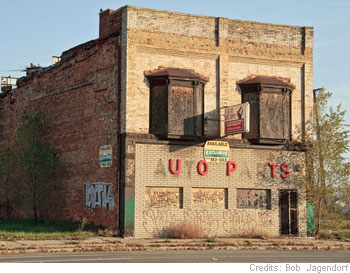 The New York Times has a good story about it this morning. It reminds me of the Talking Heads song Nothing but Flowers:
The New York Times has a good story about it this morning. It reminds me of the Talking Heads song Nothing but Flowers:
Where, where is the town
Now, it’s nothing but flowers
The highways and cars
Were sacrificed for agriculture
I thought that we’d start over
But I guess I was wrong
Once there were parking lots
Now it’s a peaceful oasis
you got it, you got it
This was a Pizza Hut
Now it’s all covered with daisies
you got it, you got it
I miss the honky tonks,
Dairy Queens, and 7-Elevens
you got it, you got it
And as things fell apart
Nobody paid much attention
you got it, you got it
I dream of cherry pies,
Candy bars, and chocolate chip cookies
you got it, you got it
We used to microwave
Now we just eat nuts and berries
you got it, you got it
This was a discount store,
Now it’s turned into a cornfield
you got it, you got it
Don’t leave me stranded here
I can’t get used to this lifestyle
——
Detroit has not had the largest peak-to-trough decline in percentage terms among American large cities, although it is getting close. Detroit has lost about 58 percent of its 1950 population; St. Louis has lost about 59 percent. And Detroit’s population is much bigger than it was in 1900; St. Louis has lost about 30 percent of its population since 1900 (just prior to the 1904 World’s Fair, when 20 million people visited St. Louis).
- Bulenox: Get 45% to 91% OFF ... Use Discount Code: UNO
- Risk Our Money Not Yours | Get 50% to 90% OFF ... Use Discount Code: MMBVBKSM
Disclaimer: This page contains affiliate links. If you choose to make a purchase after clicking a link, we may receive a commission at no additional cost to you. Thank you for your support!


Leave a Reply